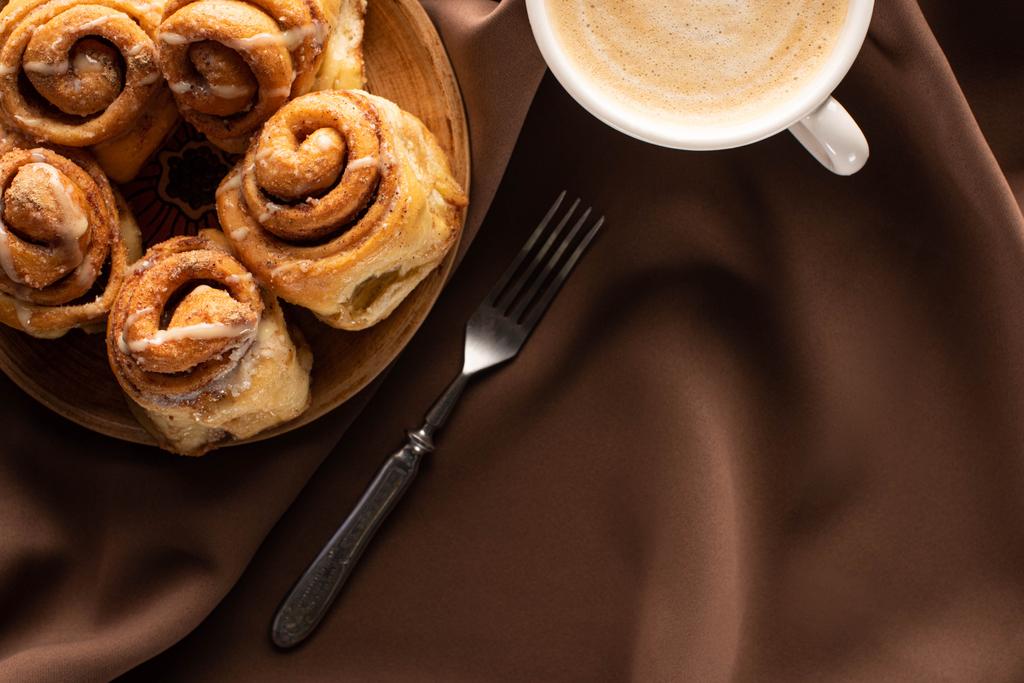The crema is the crowning glory of every espresso. It should be light brown, dense and a few millimeters high. Unfortunately, it doesn’t always succeed. Sometimes the espresso has too much crema, sometimes not enough. Sometimes the crema is too light, sometimes too dark.
This characterizes a perfect espresso crema
A successful crema can be found on correctly prepared, fresh espresso and, just looking at it, makes you look forward to perfect enjoyment. It stands equally for the quality of the coffee and a skilful preparation.
With a good espresso, the crema settles by itself, so it is not poured onto the coffee. Ideally, it is light brown, thick and a few millimeters high. Connoisseurs swear by a good crema that it holds a teaspoon of sugar for about 3 seconds before the sugar settles to the bottom. The crema should then close completely on the surface.
The settling of the crema on the surface is particularly visible when the espresso is served in a glass. Then you can see how fine bubbles form, which collect on the surface to form a golden-brown layer of foam. The finer the bubbles settle, the higher the quality of the crema. In the best case, a kind of hood forms on the espresso in which the individual bubbles can hardly be seen.
How is the crema formed on the espresso?
Thanks to the high pressure of the espresso machine, coffee oils, proteins and sugar are released from the powder. They rise to the top and combine to form a dense foam with a velvety fine consistency.
Which machine brews the perfect espresso crema?
Crema is created by pressure during preparation, which is why it is not found on filter coffee. The higher the pressure of the machine, the better the crema succeeds. An overview of the different preparation methods for espresso crema:
Espresso maker: Crema cannot be formed with the classic version because the water pressure is not high enough. That’s why there are now espresso makers with a special crema valve that ensures perfect coffee enjoyment all round.
Fully automatic coffee machine: high-quality machines create a good crema at the touch of a button. But not every machine is equally good: cheap versions produce the crema through a valve that only foams the coffee.
Pad or capsule machines: These machines also deliver espresso with dense, crema-like foam at the touch of a button. Like some fully automatic machines, they have additional valves that foam the coffee.
Portafilter machines: They generate a very high pressure of nine to ten bar. Therefore, the crema for your coffee is perfect with these machines – and nothing is foamed here!
In general, the crema is a quality criterion for the coffee. Connoisseurs can tell whether the coffee is fresh or the beans are a bit older by their consistency, colour, dwell time on the coffee and the quantity. The fresher the coffee, the better the crema.
The bean used for the espresso is decisive for the consistency of the crema. With an Arabica bean, the crema becomes finer and lighter, it is velvety. With espresso made from Robusta beans, or with a proportion of Robusta beans, the crema is denser and firmer, so it stays on the surface longer.
Espresso crema too light? That’s the reason!
The color also provides information about the quality of the coffee. If the crema is too light, the coffee was probably made too quickly and with water that was too cold. Another reason may be that the beans used were too old and ground too coarsely. On the other hand, if the crema is very dark, then the water was too hot during the brewing process or the beans were ground too finely.
If the crema dissolves quickly, then too little pressure was used during brewing – or the espresso cup was too cold or too hot.
The most important factors for a beautiful crema
In order to create a nice crema, the following points should be right:
The ground coffee should be fresh. The aroma is best three weeks to three months after roasting. You can tell when this has taken place by the roasting date on the pack.
The degree of grinding also plays an important role.
The amount has to be right. For example, if you fill your portafilter machine with too little powder, the crema will be less dense.
The water temperature has to be right. It should be around 90 to 95°C.
The pressure should be about nine to ten bar.

